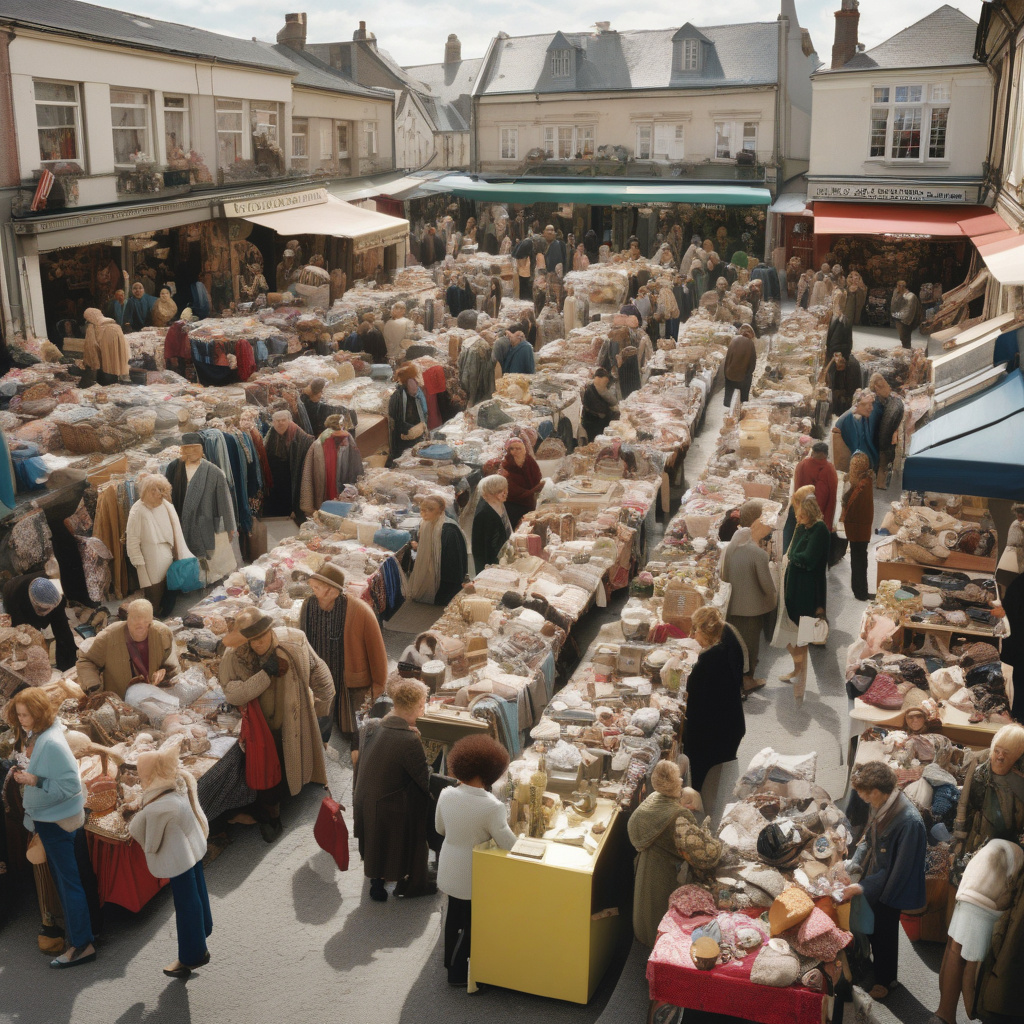Europe’s Secondhand Market Set to Surge by £1.7bn by 2025
The secondhand market in Europe is on track for significant growth, with projections indicating an increase of £1.73 billion (approximately €2 billion) by 2025, according to new research commissioned by Amazon. This anticipated expansion reflects a broader shift in consumer behavior and a growing acceptance of secondhand goods, driven by factors such as sustainability, affordability, and the digital transformation of retail.
As consumers become increasingly aware of the environmental impact of fast fashion and mass consumerism, the demand for secondhand products is expected to soar. In recent years, the secondhand market has attracted attention not only for its economic potential but also for its role in promoting sustainable consumption practices. Research indicates that purchasing secondhand items can significantly reduce the carbon footprint associated with the production of new goods. As a result, consumers are more inclined to choose pre-owned products as a means of reducing waste and supporting a circular economy.
The rise of e-commerce platforms has played a pivotal role in the growth of the secondhand market. Online marketplaces have made it easier for consumers to buy and sell used items, creating a more accessible shopping experience. According to the Amazon research, the online segment of this market is expected to account for a substantial portion of the overall growth. This trend is particularly evident among younger generations, who are increasingly turning to online platforms for their shopping needs. With a smartphone in hand, they can browse an extensive range of secondhand products from the comfort of their homes, making the online secondhand market more appealing than ever.
As the demand for secondhand goods grows, several key players are emerging in the sector. Companies specializing in the resale of fashion items, electronics, furniture, and other categories are gaining traction. For instance, platforms like Depop and Vinted are revolutionizing the way consumers perceive secondhand shopping, transforming it from a niche market into a mainstream option. These platforms leverage social media marketing and community engagement to attract users, catering to the desire for unique and vintage finds while promoting sustainable practices.
Moreover, traditional retailers are beginning to recognize the potential of the secondhand market. Many brands are launching their own resale initiatives to tap into this lucrative segment. For example, luxury brands are increasingly offering authenticated pre-owned items, allowing consumers to access high-end products at a fraction of the original price. This strategy not only appeals to budget-conscious shoppers but also serves to reinforce brand loyalty and customer engagement.
Financially, the secondhand market presents a unique opportunity for investors and entrepreneurs. The projected growth of £1.73 billion by 2025 signals a vibrant and thriving industry ripe for innovation and new business models. Startups focusing on niche markets, such as refurbished electronics or upcycled furniture, are likely to see increased interest from venture capitalists keen on investing in sustainable ventures. This trend aligns with the growing emphasis on environmental, social, and governance (ESG) criteria among investors, making the secondhand market an attractive option for those looking to make a positive impact while achieving financial returns.
However, while the outlook for the secondhand market appears promising, it is not without challenges. Competition among online platforms is fierce, and maintaining quality and trustworthiness is crucial for long-term success. As more players enter the market, ensuring a seamless user experience and addressing concerns related to product authenticity will be vital. Additionally, the sector must navigate the complexities of logistics and shipping, particularly as consumers expect fast delivery, even for secondhand goods.
To capitalize on the growing interest in secondhand products, retailers must adopt innovative strategies that enhance the customer experience. Investing in technology, such as artificial intelligence and machine learning, can help platforms personalize recommendations and improve inventory management. Furthermore, fostering a sense of community among users can encourage repeat business and customer loyalty, which are essential for sustained growth.
In conclusion, the secondhand market in Europe is poised for substantial growth, with an expected increase of £1.73 billion by 2025. This expansion is driven by a combination of shifting consumer attitudes towards sustainability, the convenience of online shopping, and the emergence of new players in the market. As businesses adapt to these trends and address potential challenges, the secondhand market presents a significant opportunity for innovation, investment, and positive environmental impact.
sustainability, secondhand market, e-commerce growth, consumer behavior, retail innovation
